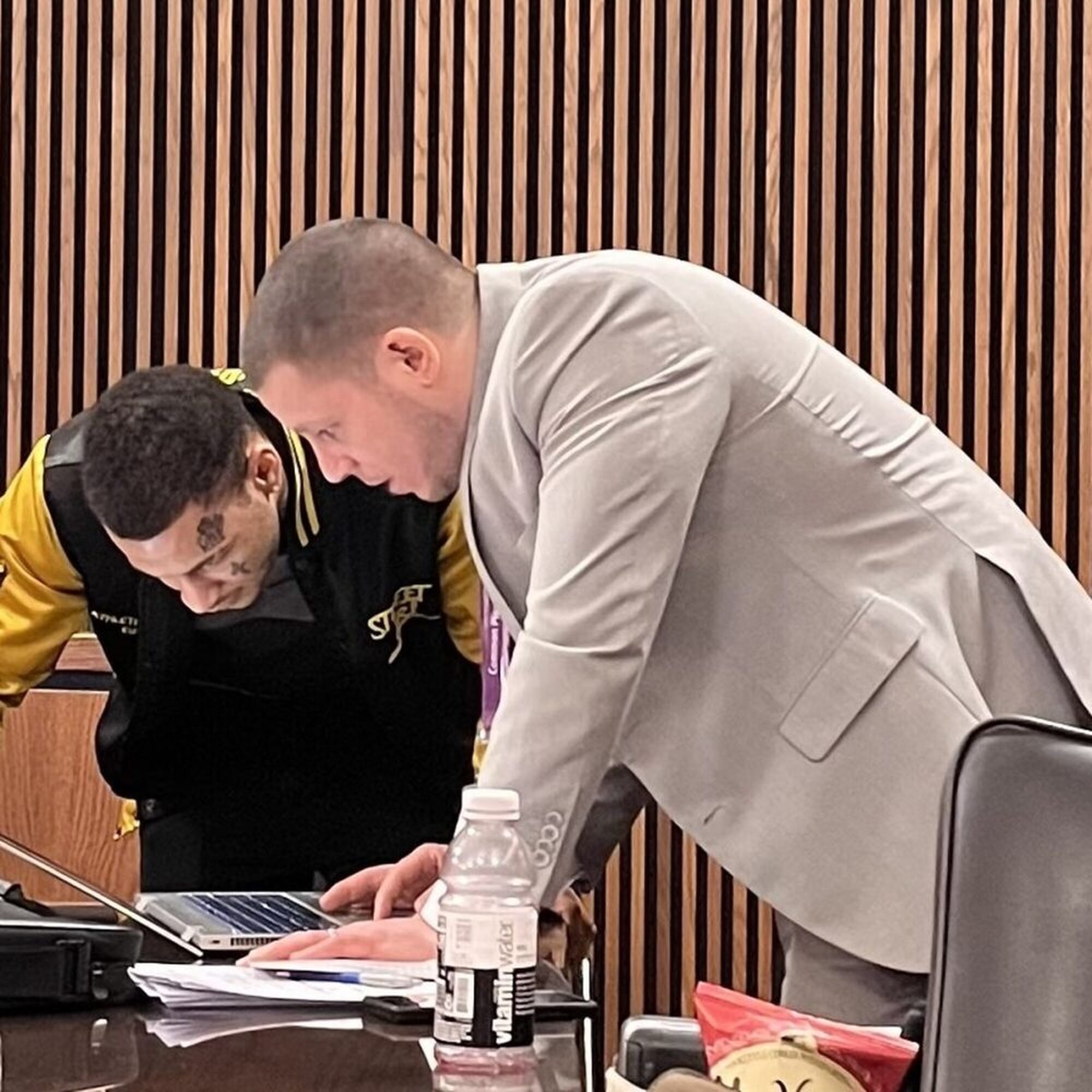One in four women and one in seven men will experience domestic violence in their lifetime. [1] The toll of this violence is felt by survivors, their children, the people accused, and society as a whole. The financial cost of domestic violence—including lost productivity and medical and legal expenses—surpasses $13.8 billion annually in the United States. Beyond the immediate harm, survivors may endure long-term consequences, such as posttraumatic stress disorder (PTSD), job loss, medical debt, legal struggles, and even loss of housing. [2] And when children are victims or witnesses, they can face a lifetime of struggle in academics and relationships or even experience future run-ins with the law. [3]
As we continue to grasp the far-reaching societal implications of domestic violence, it becomes increasingly clear that more effective intervention models are urgently needed. Some solutions are already proving successful. Cuyahoga County, Ohio, has set itself apart with a strategic approach that offers a promising blueprint for reducing harm and saving lives.
A Model for Change
Domestic violence and domestic violence-related homicides are a persistent issue across the nation. [4] However, Cuyahoga County, Ohio, has found unique success in reducing them. “Something that Cleveland is doing is working,” says Lisa DeGeeter, Director of Systems Advocacy and Policy at the Ohio Domestic Violence Network. [5] That “something” is the Cuyahoga County High-Risk Domestic Violence Court (HRDVC), which is not only preventing homicides but also offering hope for survivors and people convicted of domestic violence.
In 2019, Judge Sherrie Miday, a recently elected judge, sought to address the prevalence of domestic violence homicides in Cuyahoga County, which averages 16 such deaths and 7,500 reported domestic violence incidents annually. [6] Drawing on her extensive experience in the criminal legal system and a long history of domestic violence programs in the City of Cleveland, Cuyahoga County, and Ohio, [7] Judge Miday recognized that the traditional approach was lacking. “It’s like we’d never really thought about what’s causing the violence,” she reflects. “I just knew that it kept happening, and we weren’t addressing it properly.”
Forming the High-Risk Domestic Violence Court

This realization was the catalyst for the formation of a unique court docket focused on high-risk domestic violence cases. The core idea was simple yet profound: collaboration across disciplines, combined with a focus on treating the underlying trauma that fuels violent behavior, could create real and lasting change.
Judge Miday began with a small pilot program, meeting with probation officers and criminal legal system staff to assess and engage people convicted of domestic violence offenses. “I started staffing my cases with probation officers and had compliance hearings where I was getting to know individuals convicted of crimes. I was getting into their day-to-day routines, celebrating their successes with them. I wasn’t just seeing them when they violated,” Judge Miday reflects. “I was also seeing them on a monthly compliance docket. It was successful. We showed good results.” This early success paved the way for the program’s expansion.
In 2019, with the support of the Cuyahoga County Court of Common Pleas Administrative and Presiding Judge John J. Russo, Court Administration, and the bench of 34 elected judges, Judge Miday applied for and received a $1 million Innovations in Supervision grant from the U.S. Department of Justice, Bureau of Justice Assistance. This allowed the creation of the specialized High-Risk Domestic Violence Court, which could handle up to 50 cases per year. The focus of this court is clear: prevent homicides by addressing the highest-risk domestic violence cases: those involving strangulation or firearms. This “high-risk” categorization is based on statistical evidence showing that survivors of domestic violence are six times more likely to be killed if strangulation is involved [8] and five times more likely if a gun is used. [9]
A Collaborative, Multidisciplinary Approach
The success of Cuyahoga’s HRDVC is rooted in its holistic, multidisciplinary team. Program Coordinator Erin Becker describes the core team as including herself, Judge Miday, pretrial and post-sentence probation officers, a dedicated prosecutor, defense attorneys, a victim advocate, a social worker, a Batterer Intervention Program facilitator, and law enforcement officers. These professionals collaborate around the clock, ensuring participants receive the attention and resources necessary for real change. “One of the greatest moments we had was when the team started speaking the same language,” Becker notes, highlighting the value of training in which the team participated to develop a shared understanding of domestic violence procedures and best practices.
The Risk Management Group is a subgroup of the larger HRDVC team, led by the docket coordinator, probation officers, a victim advocate, and law enforcement. This group reviews cases upon admission to assess potential risks of future violence or homicide. Based on their findings, they tailor individualized plans to mitigate risk factors supporting both survivor safety and participant rehabilitation.
Supporting People Pretrial and Post-Sentence
During the pretrial phase, participants in the HRDVC program who post bond are supervised by the Court Supervised Release (CSR) officer, a highly trained member of the HRDVC team with expertise in domestic violence and experience in supervising this population. Bond conditions typically include a no-contact order, GPS monitoring with exclusion zones, and regular drug and alcohol testing. Participants must meet regularly with their CSR officer and work collaboratively to address underlying issues, like trauma and substance use, that are strongly correlated with intimate partner violence. The CSR officer quickly connects participants to services through HRDVC’s partnership with Signature Health, a local behavioral health provider; conducts home visits regularly; and submits a progress and compliance summary to the judge before sentencing.
If convicted of a domestic violence offense and not sentenced to a period of incarceration, eligible participants enter a two-year probation program known as community control supervision. During this time, they are supervised by an HRDVC probation officer (PO) with expertise in managing IPV cases, who serves as their main point of contact for the duration of the program. Supervision is divided into five phases, with participants progressing by meeting the requirements of each phase. As participants show progress, the intensity of their supervision is gradually reduced. Participants must remain violation-free for at least 30 days to move to the next phase. By the end of the program, participants will have moved through all five phases, effectively transforming their behaviors and attitudes and preparing to be positive, engaged members of society.
HRDVC Supervision: A Distinct Approach
All Cuyahoga County probation officers follow evidence-based practices, using risk/need assessments to develop case plans tailored to individuals’ highest-scoring needs and likelihood of success. They apply clear incentives and sanctions, use motivational interviewing, and make program referrals to support behavior change.
Phase 1: Orientation and Stabilization Supervision begins with an orientation, where participants learn about the conditions of the HRDVC, complete necessary paperwork, and establish a schedule of status review hearings with the judge. Participants are required to meet weekly with their PO, comply with GPS monitoring and home visits, adhere to the no-contact order, submit to alcohol and drug tests, and make an intake appointment at Signature Health.
Once orientation is complete, the 90-day stabilization phase begins. This phase focuses on planning for success and building stability. POs collaborate with participants to build case plans that address their assessed risk, needs, and personal goals, and participants start participating in beneficial activities and treatment as outlined in their case plans. As an incentive, if participants comply with the program for the first 30 days, their GPS monitoring is reduced to a curfew.
Phase 2: Taking Responsibility (Minimum 90 Days) The second phase encourages participants to reflect on the behaviors that led to their offense. The team helps them identify and challenge antisocial thinking while teaching strategies to avoid future violence. Participants must meet weekly with their PO, comply with a curfew, and complete part one of the HRDVC Batterer Intervention Program. They must also continue participating in individual counseling or other recommended treatment and maintain stable employment and housing.
Phase 3: Into Action (Minimum 90 Days) In this phase, participants begin demonstrating prosocial thinking and behavior, improving their family relationships, and actively planning for long-term education and employment. They meet with their PO twice a month, complete the second part of the HRDVC Batterer Intervention Program, and continue participating in individual counseling or other recommended treatment. Stable employment and housing are also expected to be maintained.
Phase 4: Building a Framework for Success (Minimum 90 Days) During this phase, participants establish a routine of consistent positive behaviors, engage in beneficial activities, and foster healthy relationships. They meet with their PO twice a month, complete all treatment, pay costs/fees/restitution, and complete at least 20 hours of approved community service.
Phase 5: Integration (Minimum 90 Days) In the final phase, participants maintain compliance with all phase requirements, demonstrate sound decision making, remain violence-free in their relationships, become active contributors to their families and communities, and create individual safety plans. Successful program completion is achieved once participants have demonstrated a transition from antisocial, violent behavior to prosocial, positive contributions to their relationships and families
HRDVC officers, however, take on an expanded role with specialized training and intensive supervision strategies tailored to IPV cases. They work within a coordinated team—including the overseeing judge, prosecutors, defense attorneys, victim advocates, law enforcement, and social workers—to close communication gaps, enhance risk management, and intervene earlier. They have access to additional tools and partnerships like GPS monitoring with real-time law enforcement response, frequent check-ins with the judge, close collaboration with behavioral health providers, and an app to facilitate communication for co-parenting under no-contact orders. With more profound insight into participants’ daily lives, HRDVC officers provide more oversight and support, increasing accountability while promoting meaningful behavior change.
A Trauma-Focused Model of Rehabilitation
The HRDVC’s commitment to addressing trauma, which often correlates with violent behavior, [10] is another key to its success. Early evaluations done by Case Western Reserve University—the HRDVC’s research partner—revealed that participants had a greater exposure to traumatic events (particularly in childhood) than the average American. This discovery made it clear that addressing the root causes of participants’ violence was essential to preventing future harm. In response, the post-sentence phase of the program integrated trauma-focused therapies into its existing cognitive-behavioral rehabilitation model, specifically a groundbreaking eye movement desensitization and reprocessing (EMDR) group therapy. EMDR is a psychotherapeutic approach recognized for its effectiveness in treating PTSD. [11]
“The model is new and cutting-edge,” Becker explains. The EMDR group therapy, combined with individual counseling, has had profound effects on participants. One program graduate shared, “It was an opportunity for me to deal with all my underlying issues and grow into a person who is not willing to put myself in [those] types of situations again. It helps us become productive members of society.” Judge Miday agrees, saying, “It’s so motivating when you actually start to see these changes in people’s lives. It’s like something has shifted, something has changed. And you start seeing that fear has guided all of their decisions leading up to this point. And now it’s like they’ve got a little bit of confidence, a little bit of hope.”
But perhaps the most telling result is the HRDVC’s success in preventing homicides. Since the program’s start, with a little over 200 enrolled to date, there hasn’t been a single homicide involving a participant.
A Blueprint for Other Jurisdictions
The HRDVC’s mission is not only to save lives but also to hopefully shift how the criminal legal system thinks about rehabilitation. By addressing domestic violence through a lens of harm reduction and evidence-based trauma interventions, the docket is achieving remarkable results in victim/survivor safety and the rehabilitation of people who have been convicted.
For other jurisdictions interested in implementing a similar model, Judge Miday offers practical advice: “Start small. It doesn’t always need to be a million-dollar grant to get this off the ground. When you start small and show positive results, it becomes easier to earn grants or gain support from your criminal justice partners.”
We have not lost one victim to a homicide on this docket since we started.
The results for both survivors and program participants are profound. According to Becker, “survivors are taking advantage of their time with no-contact orders. They’re going to therapy to heal and pursuing career and educational goals. Even if the couple does get back together…survivors are in a position to be safer and more independent from their abusers.”
And participants in the program advocate for its adoption elsewhere. One graduate stated, “I think this should be a standard program. Some people need to learn how to treat other people, how to treat women, and how to treat family members. Sometimes, they really just don’t know. It’s a good opportunity to educate people.”
In a preliminary evaluation conducted by Case Western Reserve University in November 2023, 86 percent of participants said they would recommend the HRDVC to others, and 70 percent of survivors reported feeling safer in their daily lives as a result of their experience with the program. Evaluators are now finalizing a comprehensive report that examines procedural justice and captures participant and survivor experiences during the HRDVC’s first three years of implementation.
Investing in the Right Solutions
The Cuyahoga County High-Risk Domestic Violence Court is proving that a multifaceted, compassionate approach to domestic violence can save lives and promote long-term change. By focusing on collaboration, rehabilitation, and healing trauma, the program offers hope for survivors, people who are convicted, and their communities. This demonstrates that meaningful change is possible when we invest in the right solutions.
Because ultimately, what’s our goal? It’s saving lives.
Highlighted Resources
APPR Domestic Violence/Intimate Partner Violence Resources
Center for Justice Innovation Domestic Violence Court Planning Toolkit
Domestic Violence Resource for Increasing Safety and Connection (DV RISC)
National Council of Juvenile and Family Court Judges
National Judicial Institute on Domestic Violence
The Supreme Court of Ohio & The Ohio Judicial System Domestic Violence Program Resources
About the Author
Amanda Thames is a freelance writer based in Atlanta, Georgia.



